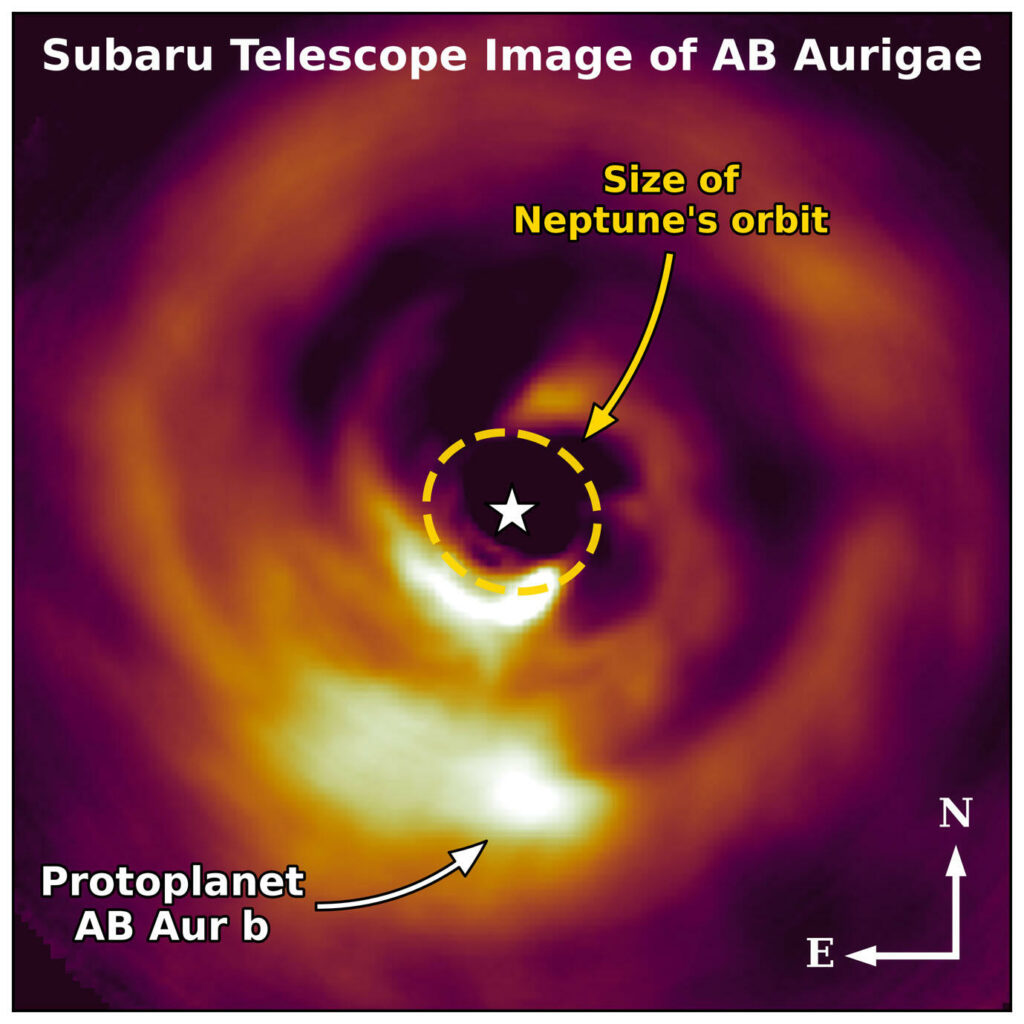
In joint observations between the Subaru Telescope and the Hubble Space Telescope, a protoplanet called AB Aurigae b has been directly imaged during its formation. AB Aurigae is only a two-million-year-old star, and this baby planet is actually nine times the mass of Jupiter and orbiting 13.9 billion kilometers away. That’s three times the distance between the Sun and Neptune. And finding this protoplanet where it is definitely breaks a bit more of our theories on planetary formation. Or as lead author Thayne Currie said: AB Aur b sheds new light on our understanding of the different ways that planets form.
You see, while we know that planets migrate, we didn’t think that planetary cores could form this far away from the star. This would mean that a gas giant’s core would form closer in and then migrate out to collect the gases. In our previous story, models show that Jupiter migrated inward at some point to collect all the heavier elements in its atmosphere, and now this baby world shows us that gas giants can form out the great distance Jupiter would have needed before migrating inward.
And that means instead of the “standard” core accretion method we’ve talked about before, where rocky worlds spin and spin and crash and collect up material and then migrate outward for their gases, we now have to seriously consider the disk instability hypothesis. That’s where the massive protoplanetary disk, full of gases, cools down over time and then breaks into one or more collapsing clumps of planetary mass. Sort of similar to how stars form, but only if you don’t look too closely at the process.
Honestly, this discovery is huge, and not just in the size of the exoplanet kind of way. Planetary scientists have been debating the core accretion versus disk instability methods for decades now. And it took the combined power of Subaru’s extreme adaptive optics system, infrared spectrograph, visible light camera, and 13 years of observations plus the ability of Hubble to separate the planet from its star and provide a baseline for the system.
The results of this discovery were published in Nature Astronomy.
More Information
Hubblesite press release
Subaru Telescope press release
“Images of embedded Jovian planet formation at a wide separation around AB Aurigae,” Thayne Currie et al., 2022 April 4, Nature Astronomy




 Join the Crew!
Join the Crew!
 Escape Velocity Space News
Escape Velocity Space News
0 Comments